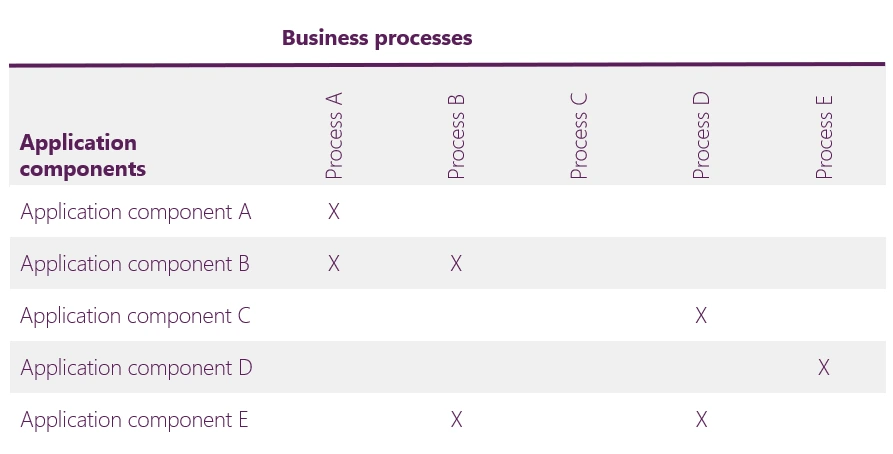The purpose of an Application/Business Process Matrix is to show the relations between the application components and business processes used within the organization. To illustrate, business processes are performed by business units, and these units use application components to execute and automate the business processes.
Applying the method
Take, for example, a cross-mapping between application components and business processes. This provides insight into the application support required to execute the processes. In the event that an application component is associated with multiple business processes, it is wise to ensure that sufficient support is available for the application component in question. Subsequently, if such an application component is (temporarily) unavailable, it will most likely have a significant (negative) impact on the continuity of the organization.

Important to realize is that an Application/Business Process Matrix also reveals whether application components are missing or perhaps duplicate. Thus, empty cells in the matrix may indicate missing application components for existing business processes. Business Process C in the figure above shows an example of this. As a result, this may mean that these processes are being performed manually. In these situations, there are benefits to be gained by automating the business processes through the use of application components.
If it is determined that application components are being deployed multiple times, this may lead to an application rationalization initiative. Application components A and B, B and E, C and E in the figure above point this out. Cleaning up (removing) duplicate application components can result in significant financial savings.
More information
For additional information about creating an Application/Business Process Matrix, please refer to Chapter 8, Section 8.2.1.4, of my book Getting Started with Enterprise Architecture.
